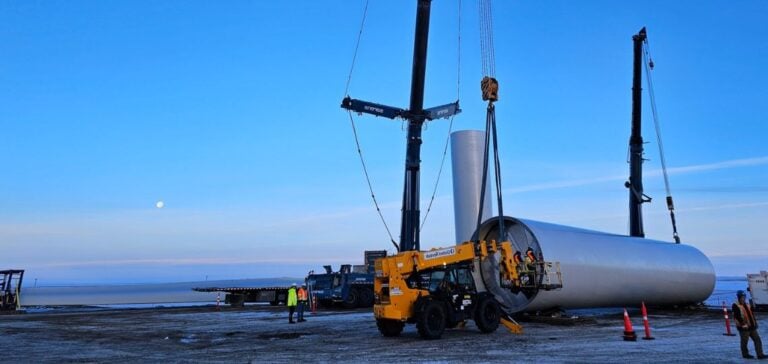Copenhagen Infrastructure Partners (CIP), via its Copenhagen Infrastructure IV (CI IV) fund, begins delivering electricity from the Buffalo Plains wind farm to the Alberta grid.
The first turbine was installed in April 2024, and to date more than a third of the planned 83 turbines have been installed.
Full grid connection is scheduled for the fourth quarter of 2024.
Once operational, the site is expected to provide 495 MW of capacity, enough for around 240,000 homes.
The project is being implemented with Siemens Gamesa supplying the wind turbines and Borea Construction managing the works.
CIP points to this achievement as proof of its ability to manage complex energy projects in a competitive environment.
Strategic development and positioning of CIP
Buffalo Plains is part of a broader strategy for CIP, which is currently developing a portfolio of over 29 GW of renewable assets in North America.
In addition to onshore wind power, CIP is positioning itself in other segments such as solar photovoltaics, battery energy storage and hydroelectric pumped storage.
With these projects, CIP is positioning itself as a key player in Canada’s energy infrastructure sector, a market undergoing rapid change and where investment volumes are increasing.
Partnerships and market dynamics
The partnerships with Siemens Gamesa and Borea Construction illustrate an integrated approach to wind project development.
Siemens Gamesa supplies the turbine technology, while Borea Construction manages on-site construction.
These partnerships demonstrate the importance of collaboration in managing risk and maximizing operational efficiency in the renewable energy sector.
At the same time, CIP manages assets and projects in Europe, North America and Asia-Pacific, and to date has raised around 28 billion euros from institutional investors, underlining the growing interest in low-carbon energy infrastructure projects.
The North American market continues to grow, supported by favorable public policies and emissions reduction initiatives.
Economic challenges and prospects
The North American renewable energy market is undergoing a major transformation, with increased competition and tighter margins.
Projects like Buffalo Plains are becoming benchmarks for players looking to optimize their supply chains and cut costs.
In this context, efficient resource management, reduced construction times and optimized operations are critical factors.
Buffalo Plains represents a significant milestone for CIP and its partners, who intend to capitalize on this type of project to strengthen their presence in the North American market and diversify their portfolio of assets.






















